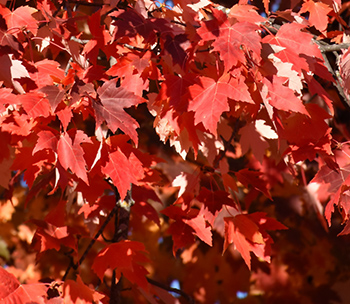Kevin Johnston, an employee at Bailey Nurseries, was the one who discovered the Matador Maple in 1997 at the container tree farm that the company owned. This freemanii cultivar was chosen for its outstanding growth habit and autumn coloration. Matador’s fall color is more uniform than Sienna Glen’s and more intense than Autumn Blaze’s. It is a flexible tree with a symmetrical, upright structure. It is an ideal option for any outside space, whether lawn, street, or park.
Maple Matador Pros and Cons
The maple tree is a lovely plant with numerous benefits, one of which is that it makes an excellent aesthetic plant. Some Maple trees make Maple syrup, which is a clear benefit of those trees. They can create attractive focal points, give shade, and raise the value of the property. However, there are several drawbacks to planting maple trees. There are varieties of maple trees with shallow roots, which can cause structural harm to buildings. Moreover, certain Maple trees are prone to disease and pests, while others have the potential to invade and outcompete indigenous plant species.
Matador Maple is an oval-shaped deciduous tree that can grow to be 45 feet tall and 30 feet wide. It is a deciduous plant with green foliage, and in the fall, the leaves of its lobed branches change beautiful colors of orange and red. Matador Maple is ideal for accent shade plantings, lawns, streets, and parks, as well as landscapes that require a shade tree with outstanding fall color. It is a very adaptable tree that develops rapidly under optimal conditions.
Maple Matador Growth Rate
The Matador Maple is a medium-sized tree that can reach heights of 45 feet and widths of 40 feet. It grows symmetrically, starting pyramidal and then maturing into a spreading, rounded canopy. The leaves initially have a medium green color before changing to a stunning deep red to orange-red color. The Matador Maple is a fast-growing tree that can live for eighty years or more if given the right conditions.
The Matador Maple is suited for growing conditions between USDA hardiness zones 4 and 7 and prefers moist but well-drained soil. It prefers to grow in conditions that are average to wet, and it can even handle some standing water. It is highly flexible and can survive in a variety of environments, including those with less favorable conditions.
In conclusion, the Matador Maple is an attractive, low-maintenance tree that develops rapidly under optimal conditions. Matador Maples and other red maples mature at a respectable rate, but it takes several years for them to reach their full height potential.
Maple Matador Problems
The most common issues with maple trees are infections and structural weakness. Maples growing in natural woodlots and forests are susceptible to anthracnose, fungal leaf spots (particularly tar spots), Verticillium wilt, and powdery mildew. In most cases, proper sanitation and cultural practices are all that are needed to keep these illnesses under control. But if these diseases aren’t treated, they can stop water and nutrients from moving through the tree, which can lead to sparse canopies with small, odd-colored leaves.
Matador Freeman Maple can grow in soils that are moderately moist to wet and poorly drained, and it can even grow in soils that are dry once it is established. It requires full sun and prefers wet soil but can handle some standing water if necessary.
Maple Matador Root System
The root systems of maple trees vary greatly. Roots can be either compact and shallow or extensive and deep; they can also be either strong or weak. Some Maples have deep taproots, while others have roots that thrive near the surface. Contrary to popular assumption, most maple roots are located in the upper 12 to 24 inches (30 to 60 cm) of the soil. Some maple roots have a taproot that extends 3–4 feet (1 meter) below the stem.
When Maple trees mature, their root systems can cause damage to concrete walkways, porches, and neighboring structures. The roots of maple trees can spread out over an area that is three times as wide as the circumference of their branches, and the roots of some species of maple trees can extend more than 100 feet (30 meters) away from the parent tree. The thin, long roots that spread out in all directions are normally developed to draw water and nutrients from the surrounding soil.



